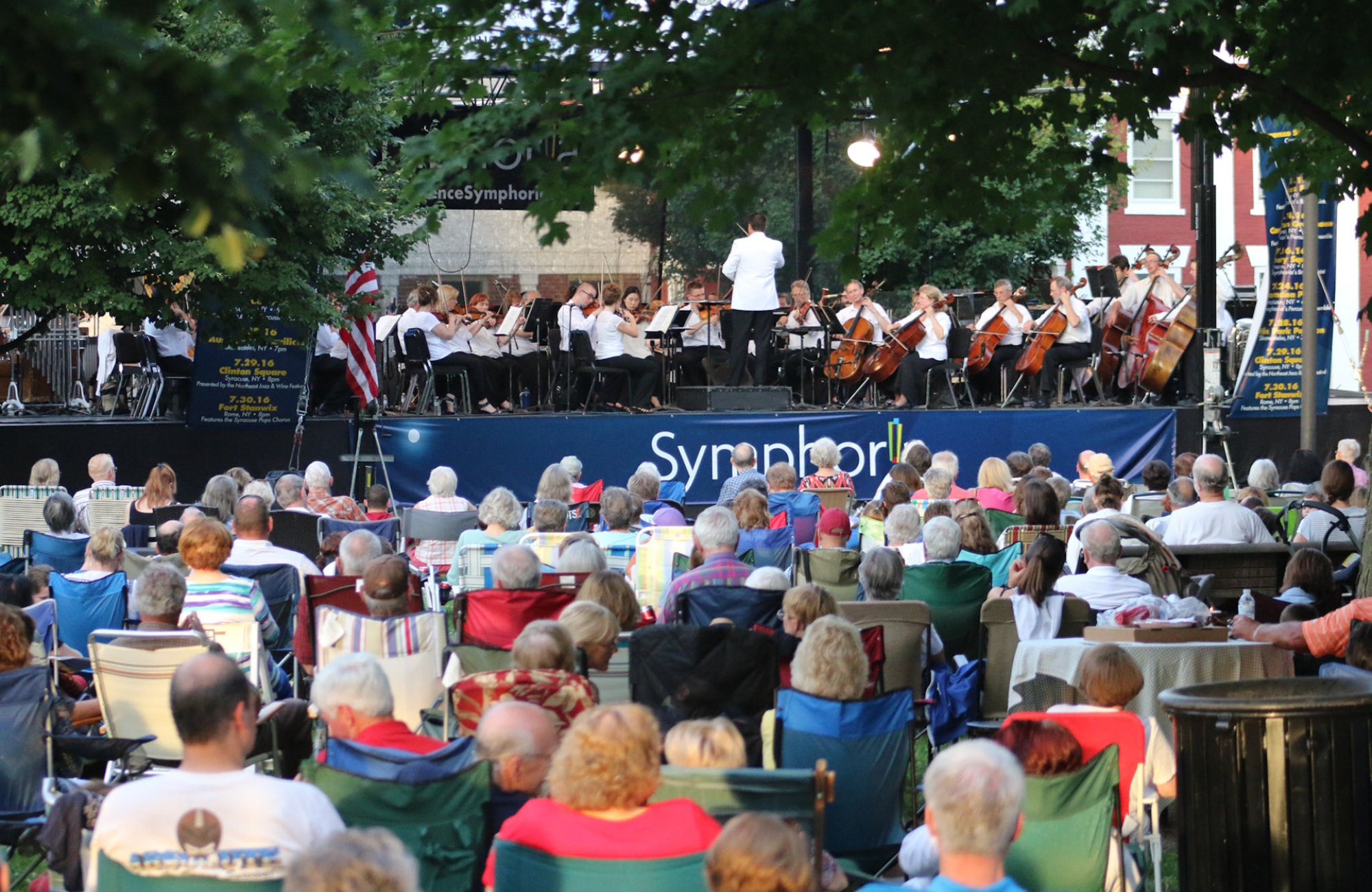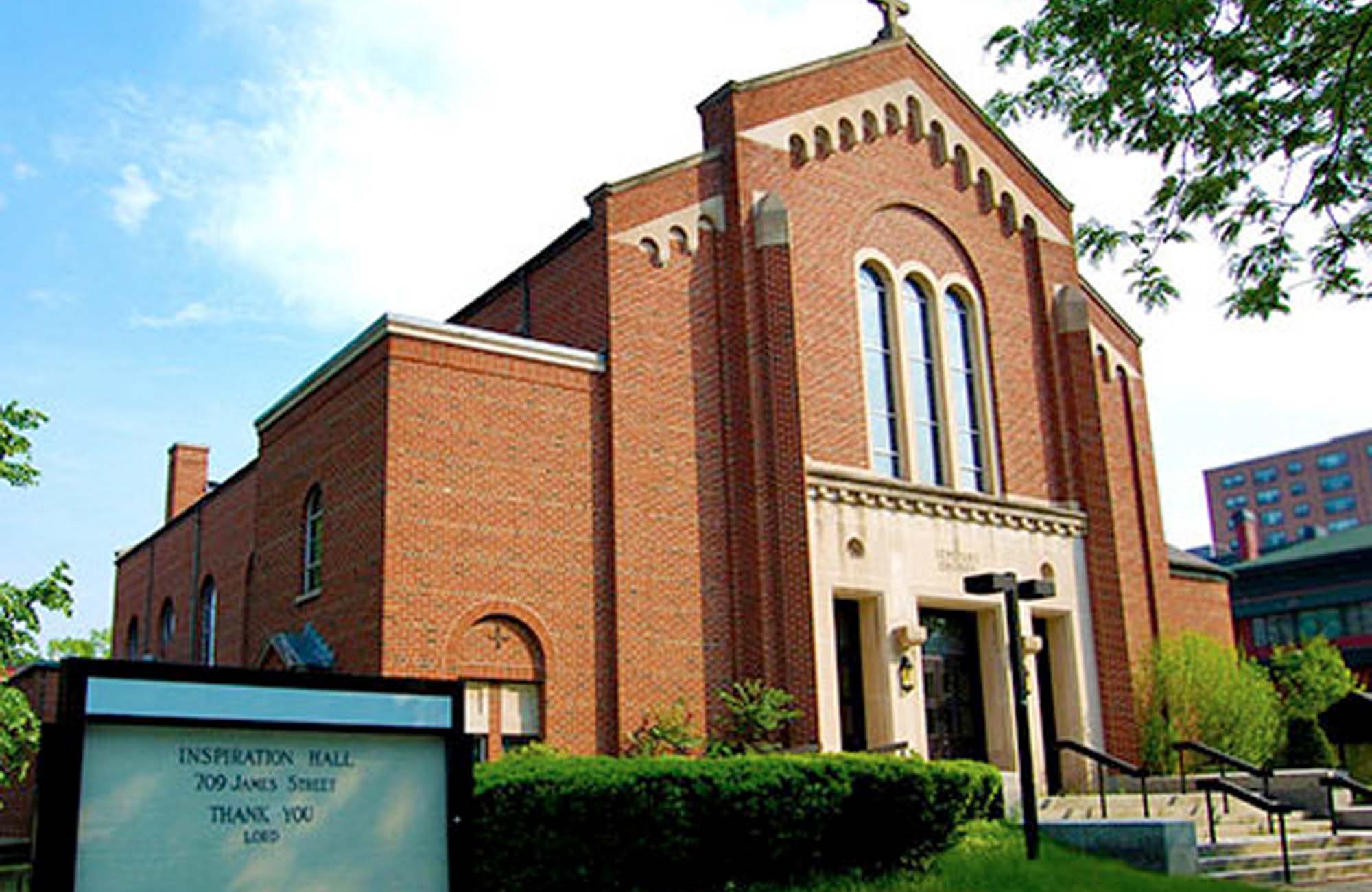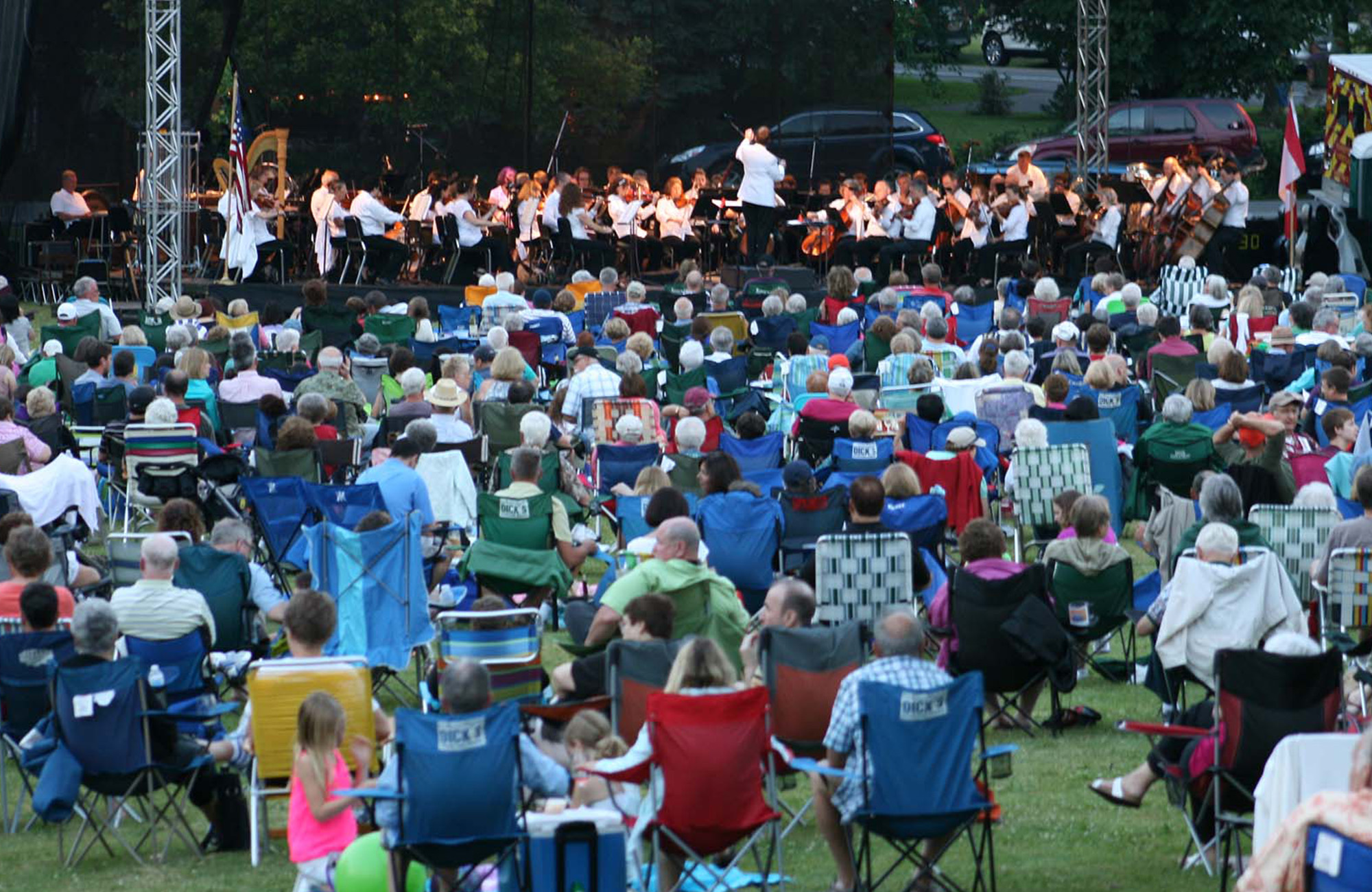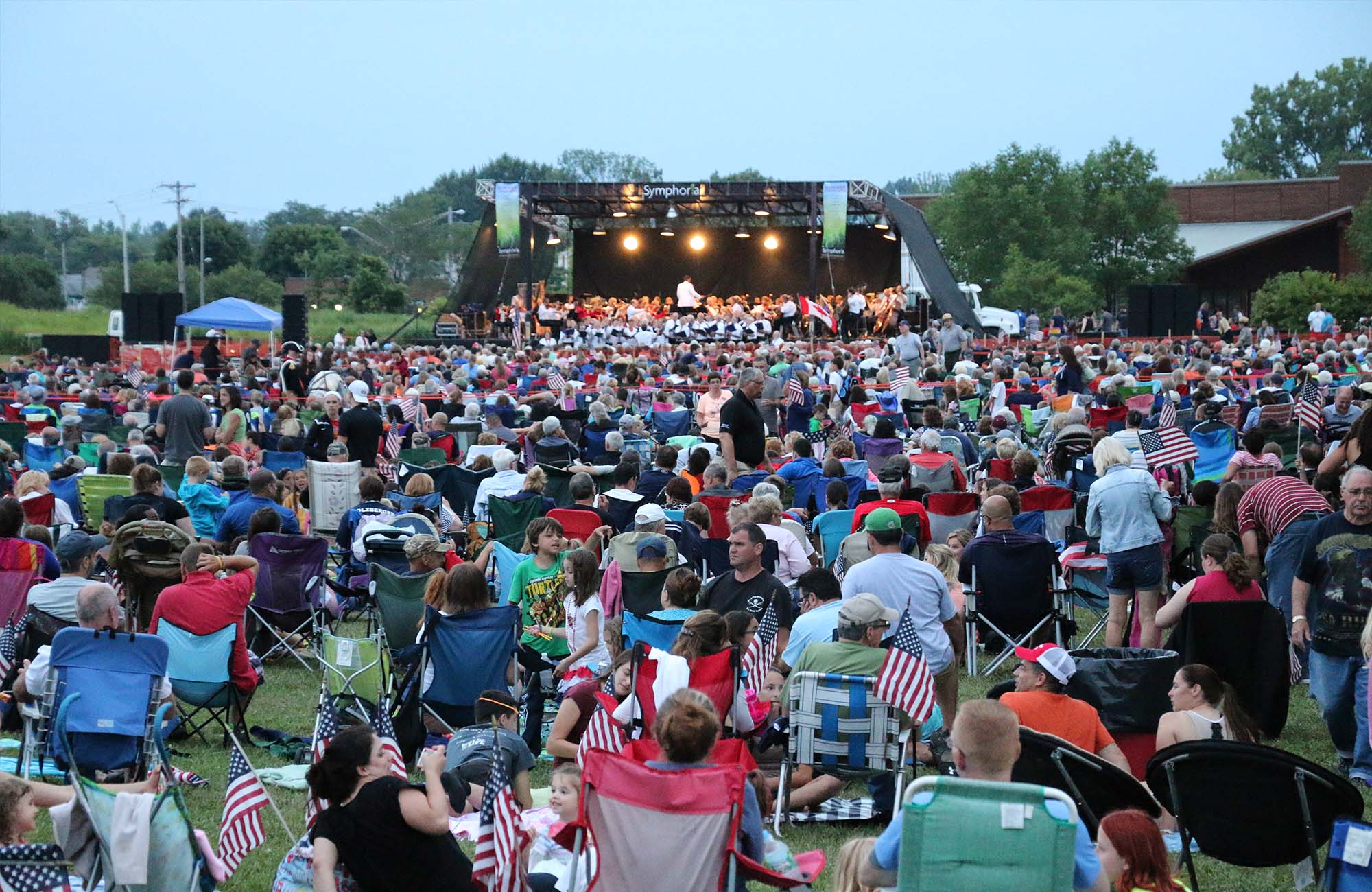Bring a blanket or lawn chair and enjoy an incredible night of music and the sounds of summer with Symphoria! This concert is free to attend and you do not need a ticket.
SMITH: Star Spangled Banner
BERNSTEIN: Candide Overture
BIZET: Carmen Suite No. 1
SKORYK: Melody (Ukraine tribute/remembrance)
MOZART: Marriage of Figaro: Voi che sapete
ANDERSON: Promenade
WILLIAMS: Music from E.T.
GOULD: American Salute
SOUSA: Hands Across the Sea
O’LOUGHLIN: Musicals Meet the Movies
CONTI: For Your Eyes Only
WILLIAMS: Jurassic Park Selections
SOUSA: Stars and Strips Forever
Thanks to Hamilton Concerts and the Village of Hamilton for making this performance possible!
Thanks to our summer series sponsors!



Symphoria’s programs are made possible by the New York State Council on the Arts with the support of the Office of the Governor and the New York State Legislature.
PROGRAM NOTES
Candide Overture 1956
Leonard Bernstein (1918-1990)
Leonard Bernstein was perhaps best known for his tenure as music director of the New York Philharmonic Orchestra, which he led from 1958 to 1969. Bernstein was passionate about teaching. He felt that every composition had a story, and he was keen on sharing those stories with the orchestra itself, with his concert audiences, and with children, through his Young People’s Concerts, broadcast on network television. Bernstein often conducted from the piano, which allowed him to combine his roles as conductor, performer, and educator. Bernstein composed traditional works for solo ...
Candide Overture 1956
Leonard Bernstein (1918-1990)
Leonard Bernstein was perhaps best known for his tenure as music director of the New York Philharmonic Orchestra, which he led from 1958 to 1969. Bernstein was passionate about teaching. He felt that every composition had a story, and he was keen on sharing those stories with the orchestra itself, with his concert audiences, and with children, through his Young People’s Concerts, broadcast on network television. Bernstein often conducted from the piano, which allowed him to combine his roles as conductor, performer, and educator. Bernstein composed traditional works for solo piano, orchestra, opera, and the ballet, as well as lighter works for Broadway and film, most notably the score for West Side Story.
Candide is a contemporary operetta, a setting of Voltaire’s novella of the same name. It follows the travels and intrigues of Candide, the illegitimate nephew of a German baron, who eventually finds happiness not in power, riches, or romance, but in the simple hard work of farming. The operetta premiered on Broadway in 1956 to mixed reviews and closed after only 2 months. However, the music was well-received, and the operetta was revived and revised numerous times, and has now become a classic.
The overture opens with rhythmic punctuation by the brass and winds, over which the strings join in a marching theme, indicating the sounds of battle.. The strings then play a lyrical melody from the song “Oh Happy We”, in which Candide sings of buying a farm and settling in the countryside. The string melody grows broader, alternating with sharp interjections from the winds and percussion. A marching theme re-emerges, followed by passages exploring different rhythms and time signatures. Eventually the whole orchestra joins together in a rousing finale.
Of note, the Glimmerglass Festival in Cooperstown will be presenting Candide over the next few weeks.
Carmen Suite No. 1 1875
Georges Bizet (1838-75)
French composer Georges Bizet showed musical talent at a very young age and was admitted to the Paris Conservatory just before his 10th birthday. He was a very talented pianist, but preferred to pursue a career in composition. He was awarded the prestigious Prix de Rome in 1857, allowing him to spend several years studying in Italy. Bizet’s opera Carmen was produced just three months before Bizet’s untimely death at the age of 37. It tells the story of a young soldier who falls for the beguiling gypsy Carmen. Despite early criticisms of its gritty subject matter and poor reviews when it was first performed, Carmen has become among the most performed operas of all time, and even strangers to the opera world will recognize many of its themes. Music from the opera has been arranged into two concert suites, the first of which will be performed tonight.
The Prelude sets the stage with tremolo upper strings and a dramatic slow melody in the lower strings. Aragonaise presents a dance melody alternating between oboe and flute/piccolo punctuated by slower themes in the strings and brass. Intermezzo starts with a lovely melody in the flute over a chord structure in the harp. The clarinet then takes over the melody with the flute providing countermelody. Finally they are joined by the full orchestra as the music broadens to support the original melody. Seguedilla is a dance form in 3/4 featuring the melody in the winds with the strings providing the dance rhythm. Les Dragons d’Alcala served as the interlude before act 2 of the opera. It consists of a military march with the primary melody in the bassoon, representing the dragoon, or cavalry regiment. Les Toreadors is a familiar rousing theme in the full orchestra.
Melody 1982
Myroslav Skoryk (1938-2020)
Myroslav Skoryk was born in Lviv, at the time part of the Polish Republic, but now part of Ukraine. He entered formal music training at the age of 7, but within two years his family was deported to Siberia, where he grew up. He returned to Lviv in 1955, entering the Conservatory to complete his musical training. He studied with Kabalevsky, among other composers.
Melody in A Minor was initially composed for the Soviet war film Vysokyy Pereval. Skoryk consciously used Ukrainian folk musical styles in the composition of the piece. In response to the 2022 invasion of Ukraine by Russia, Skoryk’s Melody has become an unofficial “spiritual hymn of Ukraine”, played throughout Europe by the Kyiv Symphony Orchestra, and in the background during Ukrainian president Zolenskyy’s address to the US Congress.
Marriage of Figaro K 492: Voi che sapete 1786
Wolfgang Amadeus Mozart (1756-1791)
Mozart was perhaps the most influential composer of the classical era. Wolfgang and his sister Nannerl were child prodigies who were taught by their father. They made several tours of Europe, performing on the keyboard and violin. Between his composing debut at the age of 5 and his untimely death at age 35, he composed more than 600 works, including piano sonatas, concerti, symphonies, and operas.
Le Nozze de Figaro is an opera buffa (comic opera) recounting the impending marriage of the servants Figaro and Susanna, and the scheming of those in the court to thwart the marriage. Voi che sapete is an aria which appears in act two, sung by Cherubino, the Count’s young page (often performed by a woman on stage). It is his declaration of love for the Countess, translated roughly as “You, who know what love is, is it what is in my heart?”
Promenade
Leroy Anderson (1908-1975)
Anderson was an American composer of short, light concert pieces, many of which were introduced by the Boston Pops Orchestra under the direction of Arthur Fiedler. John Williams described him as “one of the great American masters of light orchestral music.
This piece was written by Leroy Anderson while he was stationed at the Pentagon in 1945, He was still in military service when it was premiered by him while conducting the Boston Pops Orchestra’s “Army Night”. He later recorded it in September 1950 with the stereo version following in June 1959.
Unpublished until the mid-2000s, it is described as having solo trumpet playing a “brisk walking theme” followed by a “flowing middle theme” supplied by the string section and then completed by a “broad finale” by full orchestra.
E.T.
John Williams b 1932
John Williams is perhaps the best-known film composer of all time. He has written music for such films as the Star Wars movies, Jaws, ET, Superman, the Indiana Jones movies, and Schindler’s List. His music is featured in 8 of the top 20 highest-grossing movies of all time, and he has earned more than 50 Academy Award nominations. In addition to his work for film, Williams served as the Principal Conductor of the Boston Pops Orchestra from 1980 to 1993.
Williams composed an emotional and sensitive score to Spielberg’s 1982 fantasy film E.T. the Extra-Terrestrial, for which he was awarded a fourth Academy Award.
American Salute
Mortin Gould (1913-1996)
Morton Gould (1913-1996) was an American conductor, composer, and pianist. He was recognized as a child prodigy very early in his life, and as a result he published his first composition before his seventh birthday. His talents led him to become the staff pianist for Radio City Music Hall when it opened in 1932. He went on to compose movie soundtracks, Broadway musicals, and instrumental pieces for orchestra and band while also cultivating an international career as a conductor. Among the honors he received were the 1995 Pulitzer Prize, the 1994 Kennedy Center Honor, a 1983 Gold Baton Award, and a 1966 Grammy Award. By the time of his death in 1996 he was widely revered as an icon of American classical music.
I’m sure you will recognize the source tune for this piece, “When Johnny Comes Marching Home Again”. You may, of course, recognize the tune as “The Ants Go Marching”. Well “Johnny” came first, thanks to composer and band leader Patrick Gilmore.
Originally written for orchestra, “American Salute” has become a favorite of the concert band repertoire. Using the familiar tune “When Johnny Comes Marching Home” as the sole melodic resource, Morton Gould demonstrates his skill in thematic development, creating a brilliant fantasy on a single tune. Written in 1942 in the early days of World War II, it was composed at the request of a government radio program producer who wanted a “salute to America.” The composer insisted that he had no idea that the work was destined to become a classic: “It was years before I knew it was a classic setting. What amazes me is that critics say it is a minor masterpiece, a gem. To me, it was just a setting. I was doing a million of those things.” A million may be an exaggeration, but not by much. The pace of Gould’s schedule in those days was astounding. By his own account he composed and scored “American Salute” in less than eight hours, starting at 6 p.m. the evening before it was due (with copyists standing by), and finishing at 2 a.m. Although the ink couldn’t have been dry, the score and parts were on the stand in time for rehearsal the next morning and ready for broadcast that evening.
Hands Across the Sea 1899
John Philip Sousa (1854-1932)
Sousa began his musical training on the violin at age 6. He soon learned a variety of wind and string instruments. At the age of 13, his father, a trombonist in the Marine Band, enlisted the young Sousa in the Marines as an apprentice. After serving his apprenticeship, he joined a theater pit orchestra, where he learned to conduct. He later returned to the Marines, conducting and composing music for military band over much of his career. His many familiar marches have earned him the title “March King”.
Hands Across the Sea was written in the wake of the Spanish American War. The score is prefaced “A sudden thought strikes me; let us swear eternal friendship.” At its premiere, the audience insisted that it be played three times. The march begins with heavy use of brass and cymbals. The softer trio section includes smoother melodies punctuated by answers in the piccolo.
For Your Eyes Only 1981
Bill Conti b. 1942
For Your Eyes Only is the 12th film in the James Bond franchise. Music for the film was composed by Bill Conti, who also composed music for the Karate Kid and Rocky films.
Jurassic Park Selections 1993
John Williams b1932
Jurassic Park was another collaboration between Steven Spielberg and John Williams. Williams aimed to portray a sense of awe and grandeur to match the dinosaurs on screen. The entire score was written in about a month, and was composed concurrently with filming, allowing Williams to be inspired by the dinosaurs on set.
FEATURED ARTISTS
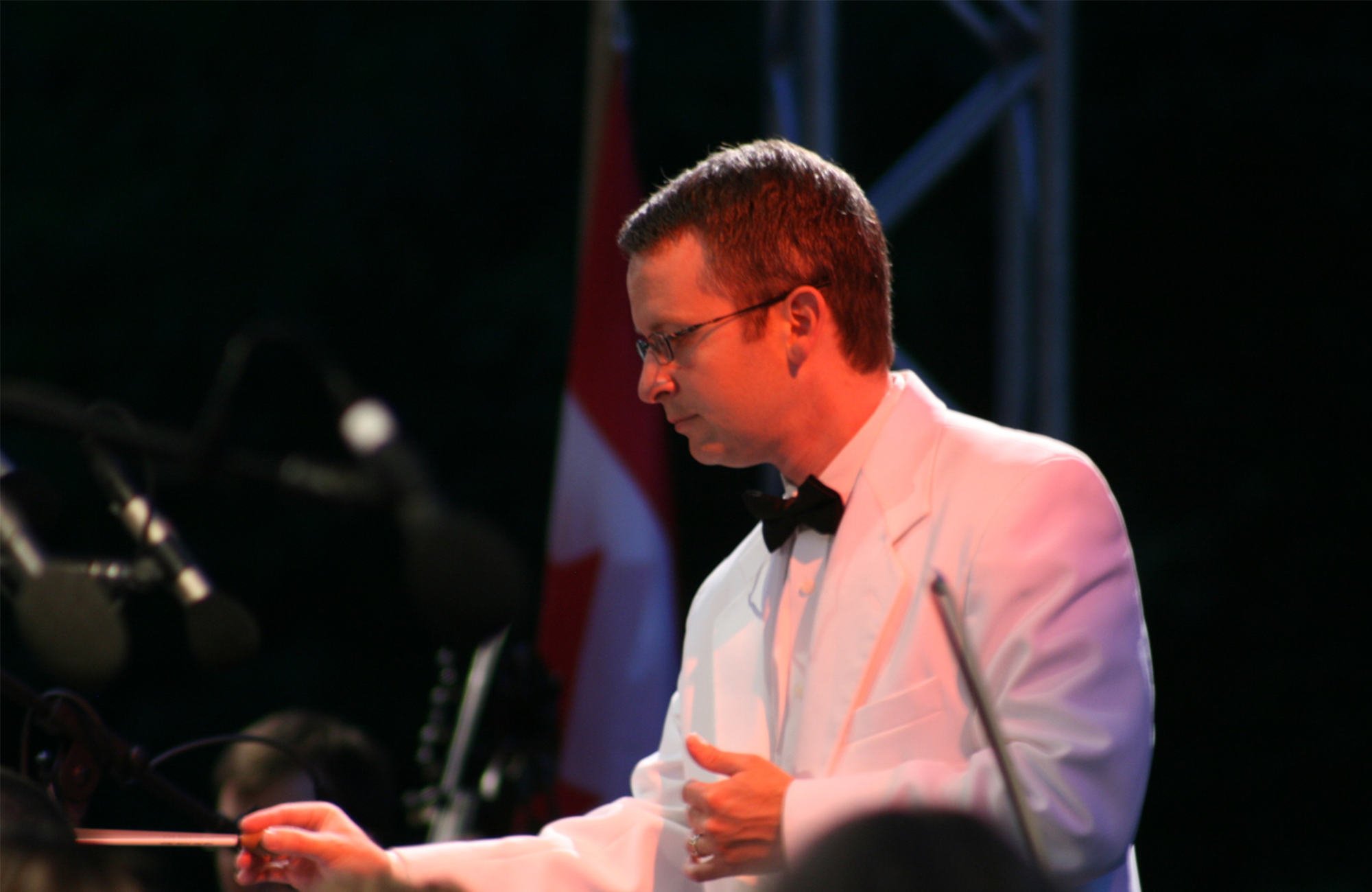
From conducting Broadway musicals in such venues as the Kodak Theater in Los Angeles to leading summer orchestral performances for thousands of concert-goers across Central New York, Travis understands and facilitates the important connection between audience members and orchestral musicians.
As a guest conductor with the Syracuse ...
From conducting Broadway musicals in such venues as the Kodak Theater in Los Angeles to leading summer orchestral performances for thousands of concert-goers across Central New York, Travis understands and facilitates the important connection between audience members and orchestral musicians.
As a guest conductor with the Syracuse Symphony Orchestra, Symphoria, and The Syracuse Orchestra, Travis has led performances of a wide variety of repertoire, including Pops, Classical and Film music. He has also collaborated with well-known composers, including conducting the world premiere of Academy Award-nominated composer Patrick Doyle’s score for the silent film “IT” at the 2013 Syracuse International Film Festival.
Currently, Travis is interim Dean of the Carroll College of Arts and Sciences at Le Moyne College in Syracuse, NY, where he was the founding conductor of the Le Moyne College Symphony Orchestra. He studied violin performance and conducting at the University of North Carolina at Greensboro and also holds an BMA from Le Moyne College and PH.D. in Arts Administration from the University of Kentucky.
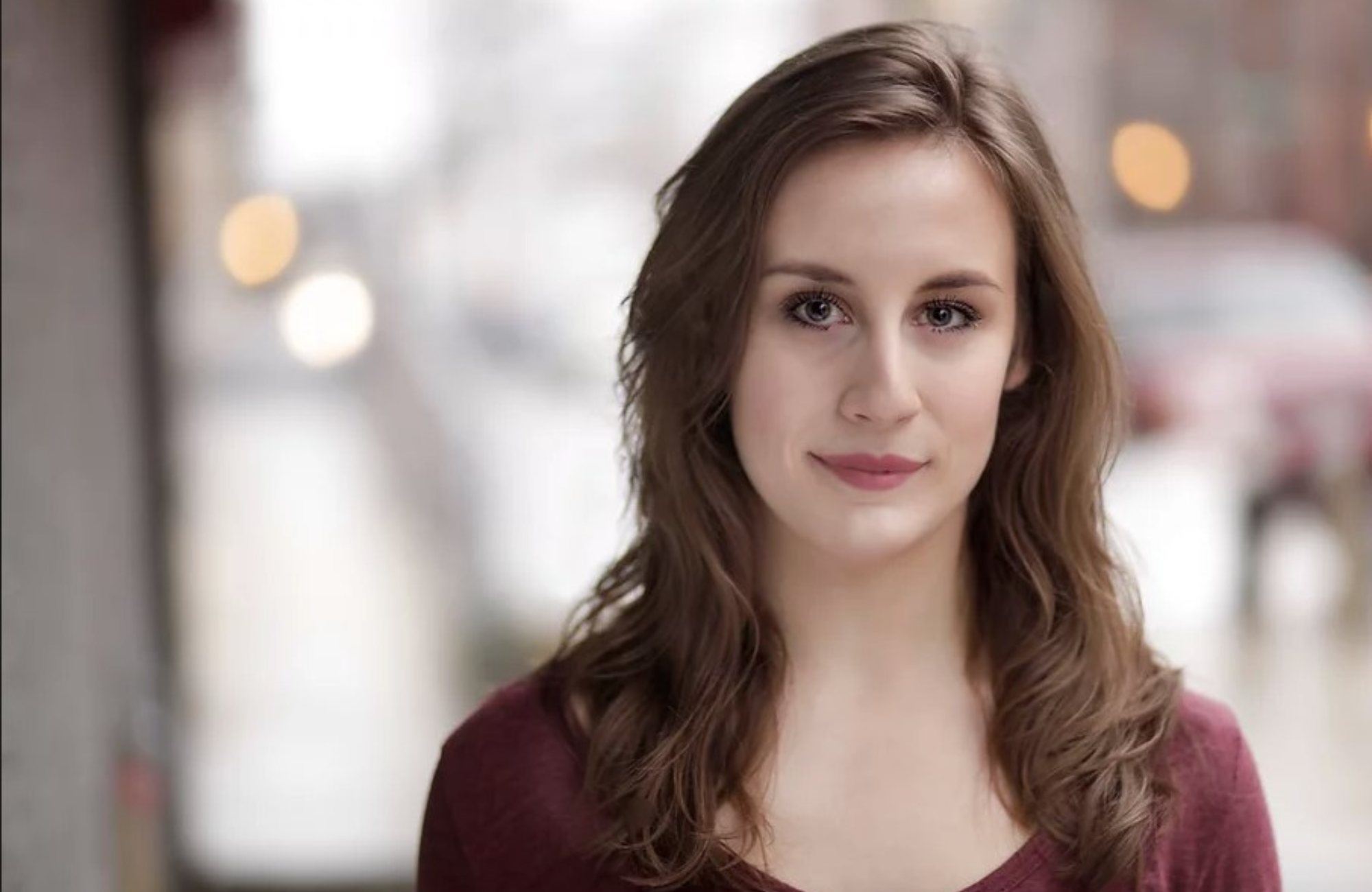
Mezzo Soprano Kay Weber (fondly known as Katie) has been described as a dynamic and moving performer, with a commitment to text, musicality, and communication through music. “Weber possesses a formidable instrument, with a highly melodious but penetrating timbre.”
Kay made her Off-Broadway Debut in Sweetee A ...
Mezzo Soprano Kay Weber (fondly known as Katie) has been described as a dynamic and moving performer, with a commitment to text, musicality, and communication through music. “Weber possesses a formidable instrument, with a highly melodious but penetrating timbre.”
Kay made her Off-Broadway Debut in Sweetee A New Musical directed by Emmy Award Winner Pat Birch at the Signature Theater at Pershing Square Theater Complex. Other Off-Off Broadway productions include Icons/Idols at Opera America and the New Ohio Theater (dir. Colette Roberts), and Henry Box Brown and The Dizzy Gillespie Theater (dir. Mehr Mansuri).
Staged readings include: Kerrigan and Lowdermilk’s Republic, Stephanie Sandberg’s Mezzo, Helen Banner/Grace Oberhofer’s Tetrology Icon’s/Idols, Brad Ross’ Michael Strogoff, Grace Oberhofer’s A Doll’s House: A New Opera at The Tank Theater as Dr. Rank, and a second production of A Doll’s House at Central Square Theater in Boston as Christine Lindt.
She performed as Dorabella in scenes from Cosi fan tutte for a short film directed by Dara Melina in The Plaiedes Product inaugural project.


